#360 Gold made British Columbia
August 30th, 2018

Claiming the Land: British Columbia and the Making of a New El Dorado
by Daniel Marshall
Vancouver: Ronsdale Press, 2018.
$24.95 / 9781553805021
Reviewed by Harold Rhenisch
*
“The history of British Columbia is brief,” wrote W.A. Bailie-Grohman. “Gold made it and gold unmade it.” In Claiming the Land, Daniel Marshall tells the story of the Fraser River gold rush and B.C.’s defining first summer of 1858.
Claiming the Land has achieved a rare and possibly unique feat in BC History by winning three major book awards: the Canadian Historical Association’s 2019 CLIO PRIZE for best book on B.C.; the 2019 Basil-Stuart-Stubbs Prize for outstanding scholarly book on British Columbia, administered by UBC Library; and the 2019 New York-based Independent Publishers’ Book Award (Gold Medal for Western Canada) – Ed.
*
 Daniel Marshall writes that contemporary British Columbia is the creation of a few months in the spring and summer of 1858 when 30,000 Californians entered the Fraser Canyon south of Yale and set up a system of populist American gold field law unregulated by any British presence.
Daniel Marshall writes that contemporary British Columbia is the creation of a few months in the spring and summer of 1858 when 30,000 Californians entered the Fraser Canyon south of Yale and set up a system of populist American gold field law unregulated by any British presence.
These men, who had come for a variety of reasons, including the creation of independent republics on a Panama model and a chance at fabulous wealth, were opposed only by the river people, the Nlaka’pamux, who wanted the gold fields to themselves, and used violence, “theft” and their long-standing trade relationship with the Hudson’s Bay Company (HBC) to keep it.
Marshall largely separates this struggle from its context in the history of the greater Pacific Northwest, in order to stress the specifically Californian nature of the canyon that spring. This separation has a cost.
By 1858, the HBC had been ruling much of the Pacific Northwest for Britain on a proxy basis for 27 years, under a trade monopoly that effectively maintained an umbrella of British military force. In the spring of 1858, the Californians simply called the bluff of this force and walked, rode, or boated north.
Marshall documents how HBC Chief Factor James Douglas publicly warned prospective gold seekers that the Nlaka’pamux were “decidedly dangerous,” and rightfully suggests that if Douglas’s intent was to try to keep gold seekers out by this warning even as he was (possibly) arming the Nlaka’pamux, defensive posturing among the gold seekers was increased. The Americans organized themselves into militias bristling with guns and heavy with ammunition. “If this were true,” Marshall writes, “then the initial use of Indigenous allies for protecting the goldfields revises, radically, our image of Douglas as a temperate peacemaker.” Indeed.
The suggestions, however, are inconclusive. For one thing, such informally armed Nlaka’pamux would have been at least as much of a British force as the independent militias (operating against the dictates of the U.S. Army) were an American one. Besides, all military force is decidedly dangerous and most armies call themselves “peacemakers.” It means little.
 Still, the image of Douglas as a manipulator of violence is arresting. As Marshall narrates, British law first showed itself only after the crucial spring and summer months when American law was firmly established and many thousands of Nlaka’pamux, and somewhere between two and thousands of Californians, had died in open genocide, guerrilla war and terrorism. Furthermore, Douglas’s delays at implementing competent public administration directed the resulting American-created system of Indian reserves, racial segregation, land use, and water rights into the form of administration we know as the British Columbia government today.
Still, the image of Douglas as a manipulator of violence is arresting. As Marshall narrates, British law first showed itself only after the crucial spring and summer months when American law was firmly established and many thousands of Nlaka’pamux, and somewhere between two and thousands of Californians, had died in open genocide, guerrilla war and terrorism. Furthermore, Douglas’s delays at implementing competent public administration directed the resulting American-created system of Indian reserves, racial segregation, land use, and water rights into the form of administration we know as the British Columbia government today.
Douglas’s ad-hoc responses remain ambiguous, though. The mineral claim system that limited the number of possible claims in the crowded lower valley and increased the pressure to move upriver into conflict with the Nlaka’pamux also limited the American presence overall. The trail system from Harrison to Lillooet that failed to deliver a route into the Upper Fraser, nonetheless diverted American energies for crucial months.
There is one other Indigenous player in this war: the geography and hydrology of the Fraser River itself. Given that the Nlaka’pamux are the people of the river, within Plateau traditions of using landforms to hunt and fight, there is no clear Indigenous distinction between the people and the river. And the river was a powerful player. Because it drains a vast region of snowmelt in the Coast, Cariboo, and Rocky Mountains, and because the Fraser Canyon constrains this immense flow in a narrow channel through a long period, most gold-bearing sandbars, especially those in the narrow gorge between Yale and Lytton, were inaccessible to placer mining before late summer.
Inaccessibility led to a bottleneck of idle gold seekers in Yale, a free space north of Yale for Nlaka’pamux, Secwepemc, and Syilx warriors to drive out gold seekers, and a resulting bloody war. The time lost to this close link between geography and Indigenous defence led to most Californians abandoning the river in the Autumn, after spending their investments on a wasted season with only the prospect of a long, idle winter and spring before them. If Douglas had armed the Nlaka’pamux, he had also armed the river.
Marshall correctly points out that Douglas didn’t exactly win this war. By Autumn, the Nlaka’pamux had been nearly wiped out and British common law land-use systems had been rearranged along Californian racial lines, with specific regions for Nlaka’pamux, Chinese, Black, and Hawaiian gold seekers. Ever since, conflicts over land-use have been resolved by following the Californian pattern: independent mercantile treaties backed by threats of force, and the HBC system of trading in prestige reset within an American populist land and water system built on racially-divided first-come claims of ownership.
The system runs through a British court and bureaucracy that sets parameters for these claims, pays for governance by taxing them, and administrates any resulting racial conflict. It is a program of staking, claiming and segregating land and identity, sanctioned by a government that finances itself by this process after claiming a commons for itself (94 per cent of B.C. is in government hands, after all), and the inability for the government to step aside from the issue because it, the government, is the issue. Just as Douglas was.
That’s the thing. The river may not have been the only unacknowledged Indigenous player here. Marshall may argue that the invasion was Californian because nearly all gold seekers came from San Francisco, with only a tiny percentage from either Washington or Oregon, yet before the Pacific Northwest was separated into various administrations, Washington, Oregon, Idaho, and British Columbia were all “Oregon” (or the “Columbia Department” for the HBC’s administrative purposes).
Land use on this pre-colonial Pacific slope was carefully controlled by kinship relationships. The inherited or gifted right to tell a story was directly linked to the harvest of resources in the land of that story, with more general resources allocated according to complex social rules of gift-giving and reciprocity. For example, when the Lewis and Clark expedition were starving in Kamiah, Idaho in 1806, the two men sent on a desperate four-day-long ride over the spine of Idaho to fetch salmon from the Nimiipuu fishery at the confluence of the Salmon and Snake Rivers. They did receive salmon, but only after a wait of three days, in accordance with a perception of their relative need in the eyes of the salmon chief controlling the harvest.
The system was subtle. When the missionary Charles Pandosy was starving to death in the Kittitas Valley in early 1848, he was gifted with dried salmon because it was Yakama practice not to dishonour the bounty of the land by allowing anyone to go hungry on it. When Alexander Ross and his crew of Hawaiians and Canadiens built Fort Nez Perce on the Columbia River in 1818 out of trees rafted down from the Blue Mountains to the east, they were surrounded by angry Nimiipuu men demanding payment for the trees.
Similarly, when the HBC traders at Alexandria, south of Quesnel, were starving after exhausting their winter supply of dried salmon they had purchased locally, they viewed the killing of their Nimiipuu pack horses by the now-starving Carrier to be theft, although the notion that property rights could trump human rights to food was foreign to everyone in the country at the time except for the HBC crew. Furthermore, every traveller and trader on the Columbia after 1835 was confronted with the rituals of tobacco: a major trade staple of the HBC.
In other words, the company made its profits in a monetary system based less on cash payment than on respect — which was weighted on a variable scale according to respect offered. Since Douglas, the long-time accountant of HBC Fort Vancouver on the Columbia, was as well-trained in this system as anyone, it’s likely that his motives in 1858 were not as purely profit-driven and his methods more Indigenous than Marshall’s resource-driven focus allows. Setting such a possible reading of Douglas’s motivation within Marshall’s claim that Douglas was placing the Nlaka’pamux in danger by publicizing that they “have forcibly expelled all Whites who have attempted to work Gold in their country,” allows for the possibility that he was thinking in an Indigenous Plateau fashion, i.e., using the land and its people according to their own nature. If the waters of the river could limit the ability of gold seekers to settle, Douglas could amplify those waters by manipulating claim dimensions and helping the Nlaka’pamux, who were also the river, while he arranged other resources.
Whether they came too late or not, it is hard to imagine that Douglas shared an American sense of populist politics or that his British politics were unchanged by his long experience in Oregon. Marshall acknowledges that Douglas had witnessed the near-total desertion of Fort Vancouver during the California Gold Rush of 1849, yet stops there. Douglas, however, lived through the influx of American settlers into Oregon from 1842, the support of Chief Factor John McLoughlin for the Americans (against British and HBC policy and directives), and the resulting loss of Oregon to the United States. He witnessed the resulting dispossession of an entire cross-racial people attempting to merge old and new ways peaceably. He was active in Fort Vancouver during the vigilante violence of the Cayuse, Yakima, and Rogue River “wars” of Oregon and Washington, and moved HBC headquarters to Victoria after the resulting loss of Washington to the American settlers who followed.
He surely knew of the Indigenous slavery and genocide conducted at Sutter’s Mill in California, at the gold diggings at the heart of the 1849 California Gold Rush. It’s hard to imagine that he hadn’t heard the reports of the casual murder of Young Chief of the Cayuse at Sutter’s ranch, after he had participated in Sutter’s slavery raids to earn money to purchase cattle for his people in the Walla Walla Valley. Douglas would have had long experience in the practiced American ruse of inciting violence in order to petition the distant U.S. Federal Government to send in its army, which meant the enlisting of hundreds of local men in armed militias paid five times the going rate for their horses, wagons, and supplies. (The early economy of Oregon depended on this subsidy.)
As a mixed race man, Douglas personally suffered from racism first-hand: more than a few American visitors to Fort Vancouver belittled him and his Indigenous wife for their “aristocratic” airs (a charge also often levelled at chiefs wearing top hats in the B.C. Interior.) Since slavery was an ongoing debate in Portland (across the Columbia) he could scarcely have missed the context of such talk — the pamphlets of pro-slavery agitators against the revolutionary Black government of Haiti, dismissing coloured people as subhuman — or the general American dismissal of the British (and Catholics, such as Douglas) as aristocrats, i.e., the enemies of free men.
Against all that, he would have known the nature of power-by-kinship of Plateau cultures: in his own marriage he lived it daily. He knew how to maintain mercantile relationships (and often the peace they required) by trading in tobacco, or honour, or respect, or prestige, or gold, call it what you will. He also experienced firsthand that separating gold seekers from natives by distance (the practice in Oregon), rarely diminished violence. The Nlaka’pamux lived in this Pacific Northwest context, and extended it with their actions.
Marshall argues well that Douglas was a British administrator out of his depth. He weakens his argument by not including the real possibility that he may have been motivated out of an act of solidarity with people like himself who were up against the wall. For example, many of the early settlers of Oregon, whose sons were now looking to make their own way in the world, were from Kentucky. They had raised their sons on their own fathers’ stories of the compact between the French, the English, and the bloodthirsty Iroquois (a fine bit of British propaganda that) who had terrorized them and slaughtered their companies in the War of 1812. Those men, who viewed the French, the English, and Indigenous peoples as a common, inferior racial class, might not have been present in British territory that fateful spring, but men like them from California and Douglas, who had lived and worked among such men for a long time, were.
So were the Nlaka’pamux. Marshall presents their legacy as an unresolved relationship with Crown land and government, yet spends little time determining if what we know as British Columbia is the creation of the gold seekers and Indigenous people together, in a dance with a distant court system, in the same way the vigilantes used the U.S. Army, or that the search for ways around vigilante action was not limited to Indigenous people.
Marshall wishes to focus closely on gold. To support his argument that the nature of the gold trade was heavily influenced by the freedom of action offered by the U.S.-British border, he argues that Indigenous people on both sides of it were trying to monopolize the trade. I don’t doubt they were, yet given that it was standard American practice that the discovery of gold on any land meant the loss of it as a potential reservation, native concerns were likely more than monetary.
First, gold would be mined illegally by trespassing American prospectors. Next, farmers would follow. Soon, young Indigenous women would be raped, or perhaps raped and then murdered. When young Indigenous men, usually their brothers, retaliated (as they always did), Americans would demand protection from the army, which would then legitimize their claim. To keep the peace, the land in question would be removed from offer in any treaty process. It had already happened to the Cayuse, the Tututni, the Washaptum, the Klickitat, and the Yakama. The Syilx had already narrowly escaped being transported to the Yakima Reservation. They could see how things worked. They weren’t dumb.
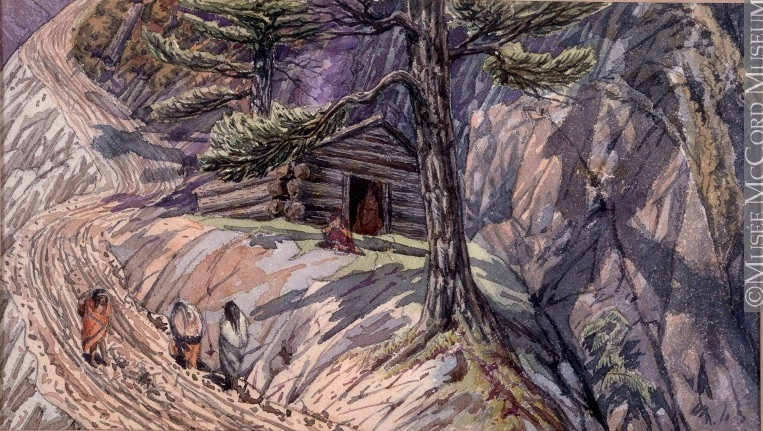
Indigenous packers on the new government road at Lillooet, 1862-63, by William Hind. McCord Museum, Montreal.
Neither was William Peon, a Kanaka (Hawaiian) former HBC packer who had likely brought news of the Fraser Gold Rush to Fort Colville. With his Syilx wife, he guided Father Pandosy to Kelowna the next spring, and helped Pandosy set up a mission, partly in an attempt to keep the Syilx out of an unwinnable war with the gold seekers. (Pandosy had had enough experience doing so with the Yakama in 1855 that he had personally been one of the major targets of the vigilantes in the Yakima “war.”) Altogether, there is a larger role for race and a more nuanced role for violence than Marshall presents.
Another of Marshall’s claims that passes too quickly over the complex and ever-present Pacific Northwest struggle against violence is that Douglas’s Harrison-Lillooet pack route around the contested Fraser Canyon was inexorably expensive and failed to relieve racist pressure in the Fraser Canyon below. To stress its ineffectuality, Marshall relates how it was outflanked by Oregon businessman and former Oregon Indian Commissioner Joel Palmer, who was (contrary to U.S. marshal law) driving freight and stock up the old HBC Brigade Trail from the Dalles to Fort Thompson (Kamloops).
Marshall argues that the threat to British sovereignty of this back door into the heart of Secwepemc and Nlaka’pamux country, and all the conflict that would result from it, was neutralized when Douglas’s levied a tax on freight and cattle crossing the border at So’yoos. He cites Palmer’s legitimate frustration, implying that more good administration of this kind would have dispelled the violence.
That is not a given. From 1858 to 1868 upwards of 40,000 Oregon cattle alone passed along that trail. Obviously, the levies weren’t fatally crippling. What’s more, Palmer was a Quaker, dedicated not just to mercantile advantage but to peace, and with a long understanding of the pressures that broke it. As Quartermaster to the vigilante armies of the Cayuse “war” of 1848, for example, he had ensured that American forces were all supplied and fed. He had also ensured that government largesse flowed to private farmers. After being appointed Oregon Indian Commissioner as a reward for those relationships, he carefully placed reservations on land at a great distance from gold seekers, in the hope of preventing racial violence. It worked, after a fashion — but only after massacres resulting when his Tututni reserve at Table Rock proved incapable of supporting life and the Tututni filtered home, straight into the mining camps on the Rogue River.
Palmer’s 1858 goal, to pioneer an Interior route to the mines, was initiated in part to ease the threat of violence by creating a market for Oregon beef denied access to San Francisco by the businessmen of Portland. In other words, Palmer’s comments on Douglas’s route were made within a context greatly in sympathy with Douglas’s own, and not in opposition to it, and suggests that there was also a pacifist pillar to the foundational society of 1858.
Pacifism might actually be central to this story. A third man who attempted to blunt the edge of violence was Syilx chief Nkwala. He intercepted a private army, the Reinhardt Party, which had crossed the recently-suppressed Yakama homeland to catch the Brigade Trail at the mouth of the Okanogan River and push north through hostile territory to Fountain in the summer of 1858. After his men murdered a group of Syilx men point blank in West Kelowna, even as they were begging for their lives with Christian gestures they had learned either from Bishop Demers on the 1842 HBC pack train or Father Nobili at Head of the Lake in 1847, it was Nkwala who intercepted them at t’kemlips, convinced them to place the murderers under his justice, chastised the gold seekers for their shameful behaviour, and then led them in a regal procession to the mines. For this attempt to contain violence within Indigenous power structures and to continue the relationships he had learned under the HBC and the Northwest Company before it, he has been much maligned. If only he had taken up arms, the arguments go, he might have stopped the gold seekers altogether.
I doubt it. A man who did resort to preemptive violence, the young warrior Tonasket, who together with men from four other tribes with homelands in the American Okanogan ambushed an early 1858 party led by the Métis son of HBC Chief Factor John McLoughlin, proved no more effectual in the end. By the end of his life, Tonasket had extensive lands south of Osoyoos Lake, but was also as much a laughing stock of White ranchers and businessmen as were Nkwala and his descendants, while his allies had largely been stripped of their land altogether. The Sinlahekin, for example, were overrun by the Similkameen and Okanogan gold rushes that came late in the year.
At the very least, news of the vigilantes of 1855, and of Tonasket’s ambush, did reach the Okanagan Syilx, and through them their allies the Nlaka’pamux, along native lines of communication, with escalating effects on violence likely as great as any possible false encouragement Douglas may have given in the Fraser, and possibly as much as any warnings of violence might have had on gold seekers setting forth from The Dalles as private armies looking to shoot their way north.
Because of this complexity of context, it would be productive to look more closely than Marshall does at legacies of ongoing Indigenous law in B.C. To any Indigenous person (i.e., a person who lives as the land) being removed from the land and one’s ancestors is a profound death. Given that such removal was as much in the cards in 1858 as genocide and that neither was completed, is a testament to the efforts of many.
Truth is, this was not only an Indigenous struggle. Oregon and Washington of the period were struggling to control the vigilantes and to replace wilderness rule with Christian society. This informal push led to the original denial of slavery to California and the subsequent formation of the State of Oregon out of the need for a federal influence to give Oregon an umbrella of law that exceeded the excesses of local populism. Local government was not enough to contain what was by many historical accounts sociopathic and psychopathic violence and the threat of expanding slavery. To expect it to have been so for Douglas in the Fraser risks naiveté.
What’s more, the stain of slavery and genocide were both present in Nlaka’pamux territory in 1858. The Californian experience included the story of young planter’s sons from the South, stripped of their ritual place in a slaving society and attempting to create a new one. It was imperative to them that the new states in the West be slave states; otherwise, the Southern cause would be outnumbered in Congress and the Southern aristocracies would be lost. In the absence of law in San Francisco, the aristocratic bearing of these boys led to a romanticized rule by vigilantes and honour gunfights in the streets. This brutalized slavers’ culture reappeared in Yale during Ned McGowan’s infamous “war”, a.k.a. bungled American takeover, in 1858. It was only defused by the prestige politics and practical justice of Douglas’s newly-appointed Judge Matthew Baillie Begbie. Both work.
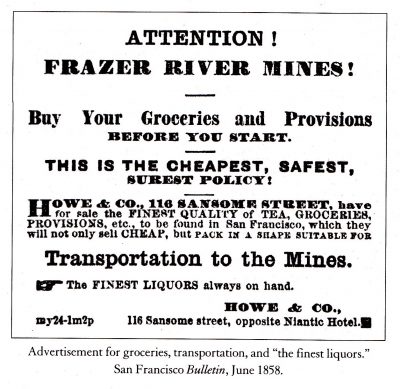 So does violence. Only three years later, the psychopathy of the streets of San Francisco led directly to the unrestrained brutality of the American Civil War. It would hardly be a stretch of the imagination to expect that the 1858 Californians were fully expecting to establish their familiar pattern on the Fraser: first vigilance, then vigilance supported by law, then extermination of Indigenous peoples, and then ownership. That they abandoned the field before the process was complete is a testament to men such as Douglas, Palmer, and Nkwala. That Douglas may have also sacrificed the Nlaka’pamux at the same time, remains a tragic possibility.
So does violence. Only three years later, the psychopathy of the streets of San Francisco led directly to the unrestrained brutality of the American Civil War. It would hardly be a stretch of the imagination to expect that the 1858 Californians were fully expecting to establish their familiar pattern on the Fraser: first vigilance, then vigilance supported by law, then extermination of Indigenous peoples, and then ownership. That they abandoned the field before the process was complete is a testament to men such as Douglas, Palmer, and Nkwala. That Douglas may have also sacrificed the Nlaka’pamux at the same time, remains a tragic possibility.
When the gold seekers gave up, ownership went to the British, who held the law. Unsurprisingly, that ownership remains very American in appearance, as Marshall argues well. Still, there might be a more positive American contribution to the mix of B.C. society than his argument allows. His final conclusion, for example, a series of notes about how the extension of Canada and a railway to British Columbia was pushed forward to prevent loss of territory to the United States, fails to acknowledge that this approach closely resembles not only Douglas’s but also that of all Indigenous peoples across the Pacific Northwest betrayed by the distant compromises of global powers.
Additionally, Marshall’s approach so weakly leaves standard colonial measures of power or success that it risks exaggerating the failure of Indigenous peoples to control their own narratives. It concludes, for example, with the suggestion that the system of Indian reserves set within the Fraser Canyon by Californian gold seekers in early 1858 was the model for all Indian reserves in Canada. Maybe so, but within the context of the Pacific Northwest the reserve model was also closely tied to a complex balance of genocide, appeasement, Christian faith, charity, and peace, however bungled or intermittently successful. None of this history is clear, but the context is.
Stories matter. If the Nlaka’pamux experience is presented as a story of tremendous loss after betrayal and inflamed violence, with a frustrated legacy of trying to claim what is already theirs, we are all left with a lonely, bitter set of future opportunities. If, however, the same story is presented as a partially-successful defence, even a tragic failure, on the shoulders of assistance and with numerous allies across the Pacific Northwest (however ineffectual or compromised), a more positive set of opportunities is available. I hope you will read the vitally clarifying arguments of Claiming the Land with this context in mind.
*
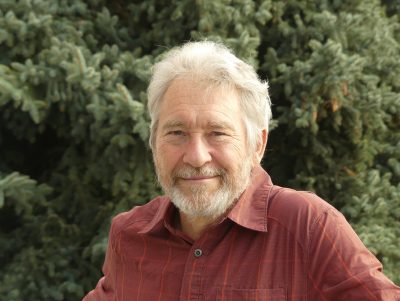 Harold Rhenisch was raised in the grasslands of the Similkameen Valley and has written some thirty books from the Southern Interior since 1974. He won the George Ryga Prize for The Wolves at Evelyn (Brindle & Glass, 2006), a memoir of German immigrant life from the Similkameen to the Bulkley valleys. His other grasslands books are the Cariboo meditation Tom Thompson’s Shack (New Star, 1999) and the Similkameen orchard memoir, Out of the Interior (Ronsdale, 1993). He lived for fifteen years in the South Cariboo and has worked closely with the photographer Chris Harris on his Cariboo-Chilcotin books published by Country Lights: Spirit in the Grass (2008), Motherstone (2010), and Cariboo Chilcotin Coast (2016), as well as The Bowron Lakes (2006), and he writes the blog Okanagan-Okanogan: One Country without Borders, from his home in Vernon. For seven years, he has toured the grasslands of Washington, Oregon, and Idaho while working on Commonage, a history of the Okanagan region set in its American context, highlighting the American history of Father Charles Pandosy and situating the roots of the Commonage land claim in the North Okanagan in American colonial practice in Old Oregon.
Harold Rhenisch was raised in the grasslands of the Similkameen Valley and has written some thirty books from the Southern Interior since 1974. He won the George Ryga Prize for The Wolves at Evelyn (Brindle & Glass, 2006), a memoir of German immigrant life from the Similkameen to the Bulkley valleys. His other grasslands books are the Cariboo meditation Tom Thompson’s Shack (New Star, 1999) and the Similkameen orchard memoir, Out of the Interior (Ronsdale, 1993). He lived for fifteen years in the South Cariboo and has worked closely with the photographer Chris Harris on his Cariboo-Chilcotin books published by Country Lights: Spirit in the Grass (2008), Motherstone (2010), and Cariboo Chilcotin Coast (2016), as well as The Bowron Lakes (2006), and he writes the blog Okanagan-Okanogan: One Country without Borders, from his home in Vernon. For seven years, he has toured the grasslands of Washington, Oregon, and Idaho while working on Commonage, a history of the Okanagan region set in its American context, highlighting the American history of Father Charles Pandosy and situating the roots of the Commonage land claim in the North Okanagan in American colonial practice in Old Oregon.
*
The Ormsby Review. More Books. More Reviews. More Often.
Editor/Designer/Writer: Richard Mackie
Publisher/Writer: Alan Twigg
The Ormsby Review is a journal service for serious coverage of B.C. books and authors, hosted by Simon Fraser University. The Advisory Board consists of Jean Barman, Robin Fisher, Cole Harris, Wade Davis, Hugh Johnston, Patricia Roy, David Stouck, and Graeme Wynn. Scholarly Patron: SFU Graduate Liberal Studies. Honorary Patron: Yosef Wosk. As of September, 2018, Provincial Government Patron: Creative BC
“Only connect.” – E.M. Forster

“The New Eldorado. A Complete View of the Newly Discovered Goldfields in British North America…” 1858.


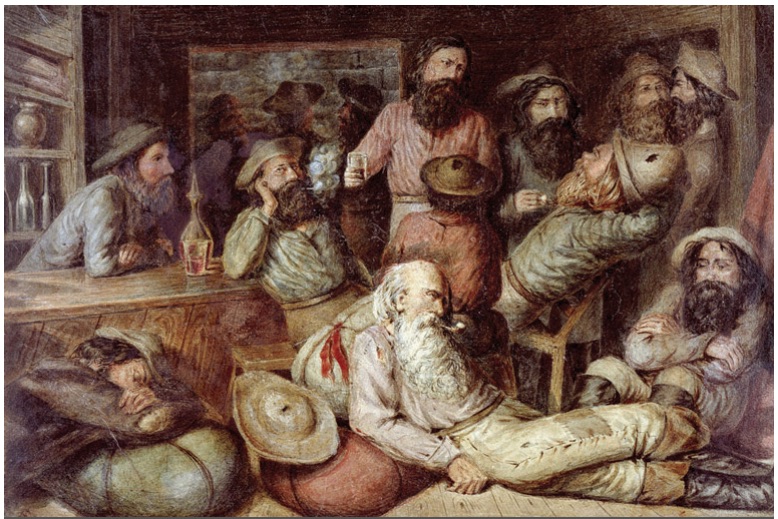
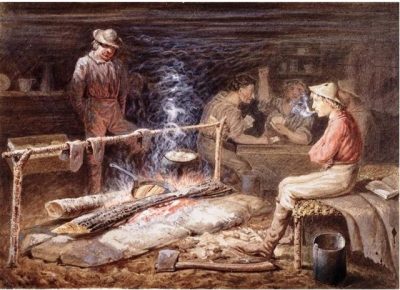
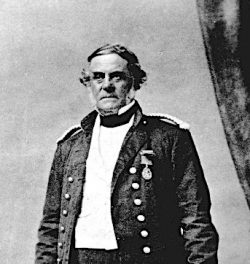

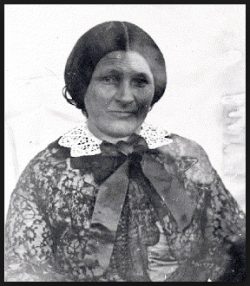



Leave a Reply